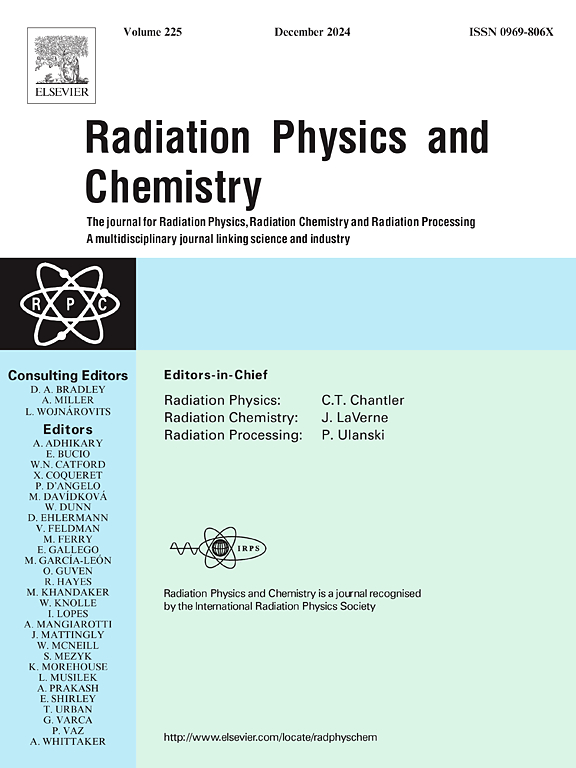Effect of gold and silver mixed nanofillers and gamma irradiation on the structure and physical properties of PVA/PVP nanocomposite
IF 2.8
3区 物理与天体物理
Q3 CHEMISTRY, PHYSICAL
引用次数: 0
Abstract
Gold and silver nanoparticles (AuNPs and AgNPs) were synthesized using the leaf extract of Chenopodium murale (C. murale) via a green, eco-friendly synthesis approach. The nanoparticles were incorporated into a polyvinyl alcohol/polyvinyl pyrrolidone (PVA/PVP) matrix through the casting method to produce composite thin films. These films were subjected to gamma irradiation at doses of 3, 5, and 8 Mrad, and their structural and optical properties were systematically analyzed before and after gamma irradiation. FT-IR spectroscopy indicated significant structural rearrangements within the polymeric matrix, attributed to gamma irradiation effects. Ultraviolet–visible (UV–Vis) spectroscopy confirmed the presence of a strong charge transfer band in the UV region and characteristic surface plasmon resonance (SPR) peaks of AgNPs and AuNPs, observed in the 420–540 nm range. Detailed optical analysis enabled the determination of indirect and direct energy band gaps, revealing irradiation-induced modifications. Gamma irradiation influenced the size and distribution of nanoparticles, resulting in notable alterations in the structural and optical properties of the nanocomposite films. These findings underscore the potential of gamma-irradiated AuNP/AgNP composites in modern applications like optoelectronics and materials science, where tailored structural and optical properties are critical.
求助全文
约1分钟内获得全文
求助全文
来源期刊

Radiation Physics and Chemistry
化学-核科学技术
CiteScore
5.60
自引率
17.20%
发文量
574
审稿时长
12 weeks
期刊介绍:
Radiation Physics and Chemistry is a multidisciplinary journal that provides a medium for publication of substantial and original papers, reviews, and short communications which focus on research and developments involving ionizing radiation in radiation physics, radiation chemistry and radiation processing.
The journal aims to publish papers with significance to an international audience, containing substantial novelty and scientific impact. The Editors reserve the rights to reject, with or without external review, papers that do not meet these criteria. This could include papers that are very similar to previous publications, only with changed target substrates, employed materials, analyzed sites and experimental methods, report results without presenting new insights and/or hypothesis testing, or do not focus on the radiation effects.
 求助内容:
求助内容: 应助结果提醒方式:
应助结果提醒方式:


